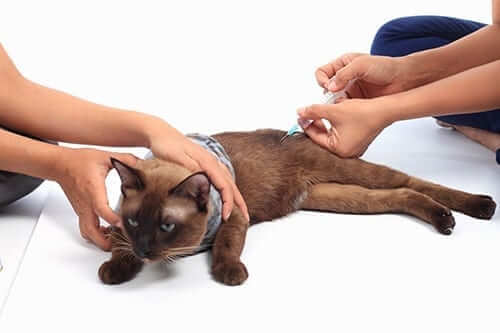Just this week I had one of my clients ask me which part of the insulin syringe plunger is supposed to go to the unit mark I prescribed. He was a little embarrassed to ask, but I am so glad he did!
For a cat, the difference could potentially equate to halving the dose! The plunger usually has a black rubber top. He wasn’t sure if he should align the top or bottom of the black tip with the unit mark on the barrel of the syringe. You should pull the plunger so that the portion of the plunger nearest the needle is at the units prescribed. The dose of insulin units fills the volume between the top of the syringe and the top of the plunger.
I thought that this would be a great time to outline the differences you will find when shopping for insulin syringes for your pet. And just remember, you can always ask your veterinarian for more information if you have any questions.
Clients also often wonder about needle size and length. The diameter of a needle is referred to as its “gauge”. A really wide-bore needle will have a small number. For example, vets usually use needles between 22 and 25 gauge to give most medications to dogs and cats in the clinic. For a horse or a cow, a vet might use an 18 gauge needle! When we ask clients to give injections to pets daily, particularly small volumes of insulin, we usually use little tiny needles. Why poke your pet with a big needle if you don’t have to? Insulin syringes often are in the range of 28 to 31 gauge. These are pretty small needles! Pets don’t tend to react much to a poke with such small needles, whether 28 gauge or 31 gauge.
I find the length of an insulin syringe needle affects diabetic pet owners more than the gauge of the needle. Some insulin syringes are so darned short that they are awkward, especially for a very furry pet. I find the half inch long needles much easier to use than the shorter 5/16 inch long insulin needles. But if you have a small animal or one that is not that fuzzy, you should be OK with a shorter needle.
It is very important to get an appropriate syringe for whichever insulin type you are using. Some insulin is U-40, meaning there are 40 units per cc (cubic centimeter, also known as milliliter) of insulin. Most insulins are U-100, meaning there are 100 units per cc of insulin. There are insulin syringes designed for both U-40 and U-100 insulin. You should only use syringes designed for the specific kind of insulin that you are using. Never use a U-40 syringe with U-100 insulin. Never use a U-100 syringe with U-40 insulin. Yes, there may be some conversion tables on the internet that can help you calculate the dosage when using the “other” kind of syringe, but I urge you not to do it. Math errors happen all too easily and could land your sweetie in the ER.
Now, let’s talk about the volume of the syringe. Insulin syringes come in 3/10 cc, 1/2 cc, and 1 cc total volume. If you use a 3/10 cc syringe with U-100 insulin, clearly the maximum dose you could give in that syringe would be 30 units. (3/10 x 100 units / cc = 30 units). I prefer clients use the 3/10 cc syringes, but for a very large diabetic dog requiring more than 30 units, it would not be large enough. Why do I like the smaller volume syringes? Simple! The more narrow the bore of the syringe, the wider apart the unit markings are on the syringe, making them much easier to read. As many cats are only on one or 2 units of insulin, these 3/10 cc syringes are a fantastic choice! UltiCare even came out with a small volume syringe with HALF unit markings on it. My hat is off to UltiCare for that breakthrough!
Never hesitate to communicate with your own veterinarian. Education is the key to a well-controlled diabetic pet.
NOTE: Consult your veterinarian first to make sure my recommendations fit your pets special health needs.







Leave A Comment